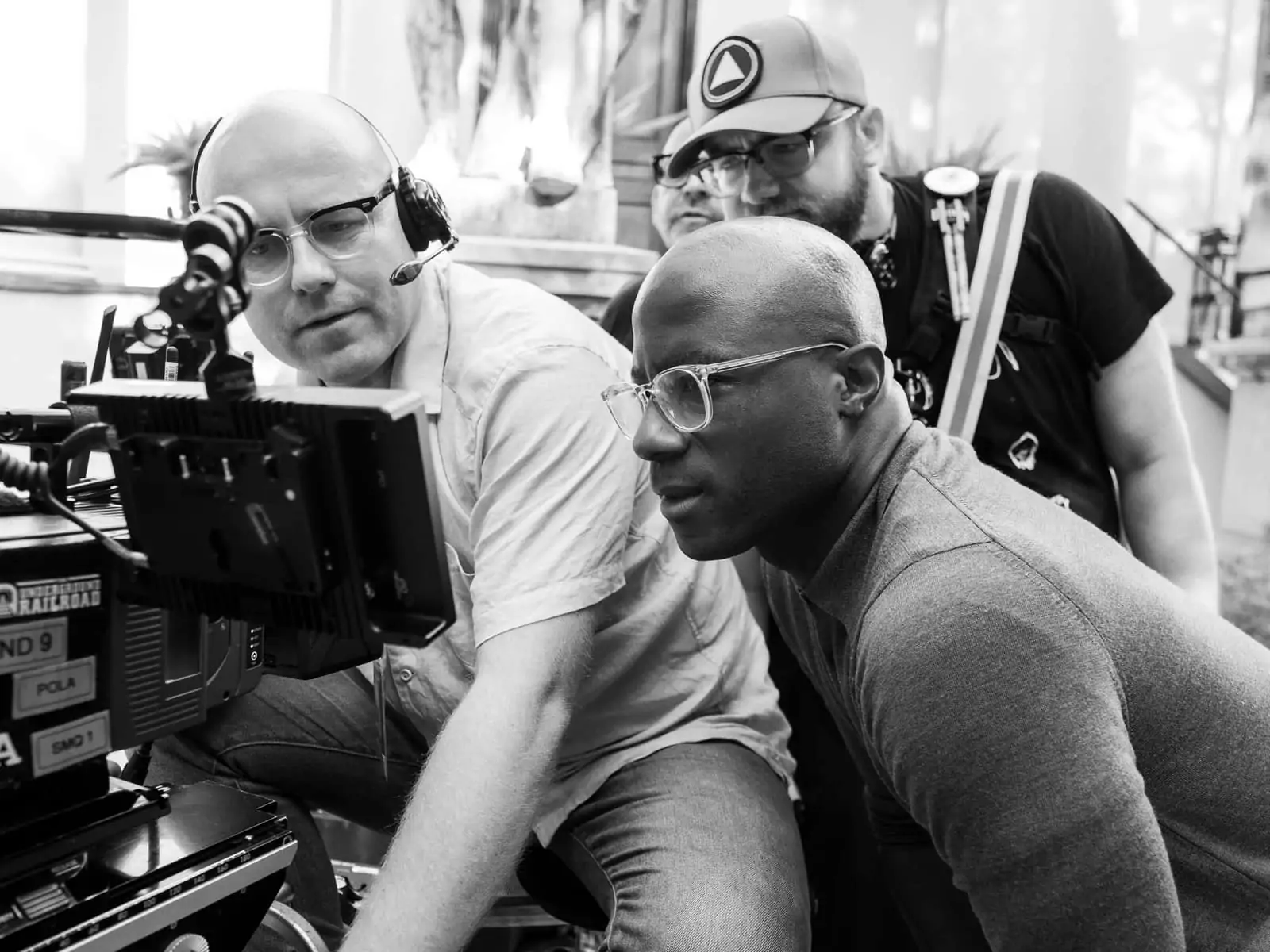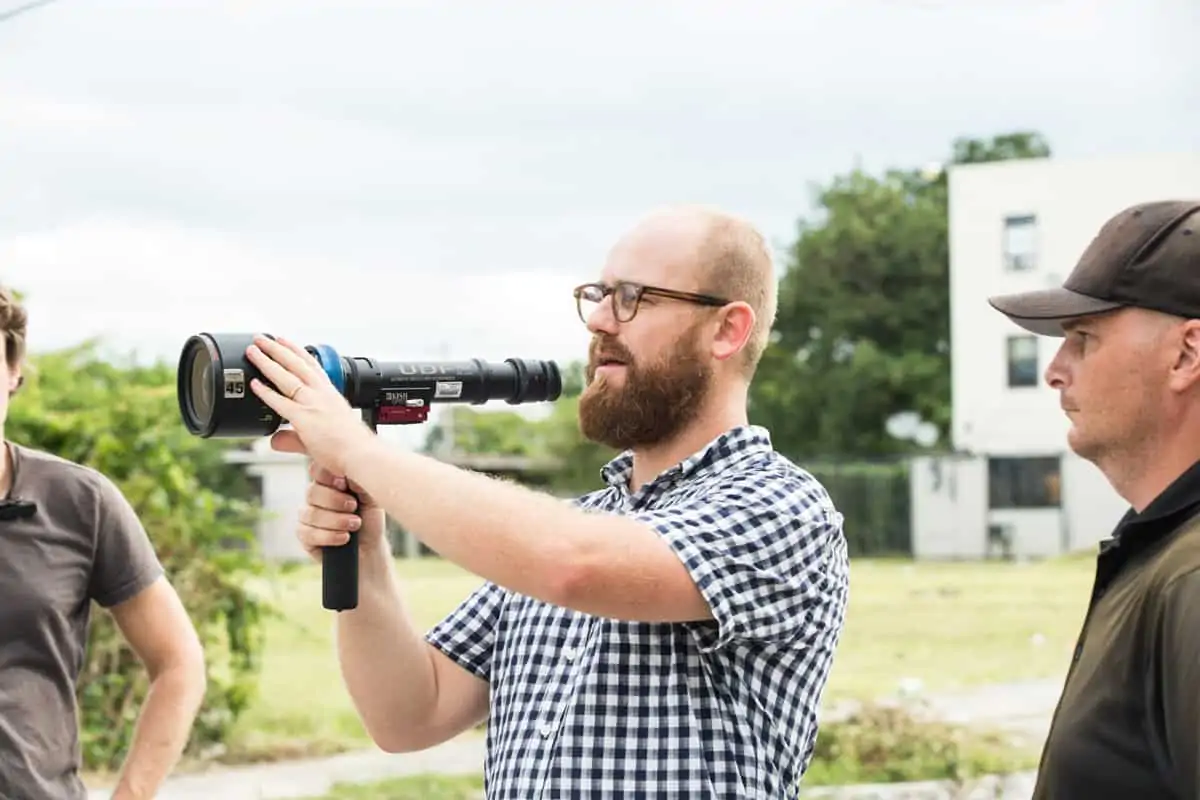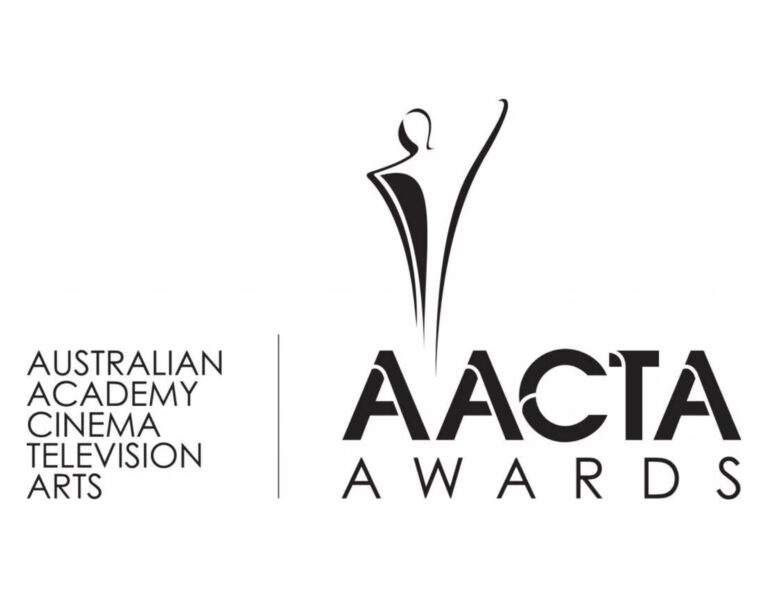James Laxton ASC on working with Panavision for The Underground Railroad
Sep 20, 2021

Published in 2016, Colson Whitehead’s novel The Underground Railroad examines America’s history of slavery through a fictional lens that imbues the story’s terrible truths with a touch of mythology. After its main character, Cora, escapes from a plantation in Georgia, she embarks on an arduous journey northward, toward the promise of freedom. Cora travels on the Underground Railroad, which — unlike its real-world namesake — is depicted as an actual functioning railroad that wends from station to station through subterranean tunnels.
For the novel’s 10-part live-action adaptation, available to stream on Amazon Prime Video, director Barry Jenkins, cinematographer James Laxton, ASC and their collaborators shot for 116 days of principal photography. “The whole show was shot in Georgia,” Laxton notes, “about one-third of it in Savannah, and two-thirds in the Atlanta region.” The resulting series has earned seven Primetime Emmy nominations, including for Outstanding Limited or Anthology Series, Outstanding Directing and Outstanding Cinematography.
Jenkins and Laxton trace their creative partnership back to their film-school days at Florida State University. In the years since, their collaborations have included the feature Medicine for Melancholy, the Best-Picture Oscar winner Moonlight, and the James Baldwin adaptation If Beale Street Could Talk. For The Underground Railroad, the filmmakers crafted a look that supports the story’s fantastical elements by grounding them in something real and tangible.
“I’m always looking to create images that have a certain sense of believability,” Laxton says. “I think it’s important that audiences can in some way believe what they’re watching. The way that light interacted with the lenses was important in that regard. It was going to aid our ability to tell a story that audiences would feel engaged with so they could believe what they were witnessing.”
Laxton partnered with Panavision to select a lens package primarily made up of customized Panaspeed large-format spherical primes and complemented with a selection of modified Primo 70 optics. The Panaspeeds naturally have an inherent warmth and a classic Primo look that provided a strong foundation for the customization. Additionally, for three episodes that would be framed in the 2.39:1 aspect ratio (instead of the series’ primary 1.78:1 presentation), the cinematographer employed T Series anamorphics that were modified from their standard 2:1 squeeze ratio to a 1.85 squeeze, allowing him to use more of the Panavised Arri Alexa LF camera’s sensor.
Panavision recently caught up with Laxton to discuss the series’ visuals.
Panavision: There’s a distinct language to the way the camera moves in this series, often in long takes — and ‘movement’ and ‘length’ are certainly words associated with a railroad. As you and Barry Jenkins began discussing the project, how did you start to define that camera language?
James Laxton, ASC: This is a complicated and dense story in many ways. First and foremost, it’s a story of a young woman’s journey escaping slavery. In that sense, it’s a story from her perspective, so the camera wants to take that same path and to see things as she does, which inevitably leads to a lot of movement. Simultaneously, we’re touching on some myth-based concepts — the conceit being that the Underground Railroad in this story is an actual railroad, not just a pathway — so it takes on a sense of scale and scope that might be different from previous work Barry and I have done together.
In addition to that, there’s a very real-life story we’re telling. This is our history as Americans. So we wanted to make things feel very true and very real. The lighting built the foundation of that. The way that fire is rendered, for example — I wanted there to be an interactive feel as characters hold a lantern or a candle. Also, in depicting a traumatic experience like we were with the story of Cora [Thuso Mbedu], I wanted to take a meditative approach. The camera’s slow, methodical steps, and the pace at which a Steadicam wanders through a scene, stem from wanting to base the tale with a sense of real strength, truth and weight. It’s quite a few of those things that all combined in the images we were looking to create.
In the final episode, the camera is much more static for the story of Cora’s mother, Mabel [Sheila Atim].
Laxton: That episode is distinct from the rest in so many ways. First of all, it’s one of three episodes that we shot anamorphically. But maybe more importantly, it actually does take on a different language with these static shots that don’t seem to be found in previous episodes. Mabel’s story is one of serious tragedy and serious horror in many ways. It wasn’t like we were looking to make a horror movie, but there were techniques we were using from some genre-based filmic languages to provide context for a real sense of horror.

Throughout the series, there are ‘portrait’ shots of characters — sometimes just an individual, and other times large groups — where they’ll be standing still, staring straight into the lens, and the camera will have some movement to it. How did you arrive at those shots? And did you know when and how they would be used as you were capturing them?
Laxton: Not really, no. Barry and editors Joi McMillon and Alex O’Flinn later found the appropriate places to put them. But there were moments when we felt an emotional connectivity, and we wanted to find a different foundation for the audience and to create a bigger world. It just felt natural to pause for a second and do these portraits. And we did that all the way through, which was pretty wild considering our page count was not a small one by any means.
They do something that I think is really important: They create a sense of scope to the story. As we’re telling Cora’s journey, look how many other stories we could be telling. They’re all experiencing the same trauma and similar journeys. We could be telling all of them. The portraits provided a way to hit home this idea of how massive this trauma was and how important it is to tell these stories.
I think for everyone — including the crew, who had to work very hard to make these happen — there was a sense of importance to them. Especially when we started seeing what we were getting in these portraits, it became really clear how important they were. It was something we all wanted to dedicate time towards.
Was this primarily a two-camera shoot?
Laxton: It was. There were a couple days with three cameras — for some of the battle scenes and things like that — but generally speaking it was two cameras. We had a few other operators, but Jarrett Morgan, who did Steadicam, did most of the work, and I operated another camera as well, which was quite fun. The two of us got quite good at finding ways to cover scenes and choreograph our work.
What was your process for bringing other operators into the project’s visual language?
Laxton: It’s difficult, as you might have guessed. There’s such a nuance to the way Barry loves to tell visual stories. It was a lot about telling them, ‘Trust yourself, trust your instincts. We’re going to ask you to do untraditional things, and just try to be up for it.’ It doesn’t come from a technical perspective. It’s much more instinctual. We’re looking for someone to interact with the actors, and feel an emotional performance, and feel when it’s time to start the move. That was certainly true with Jarrett. The moment he came aboard, it really clicked for Barry and me, and the three of us became really close and great partners. While he was new to the dynamic, Jarrett clearly understood the visual language we were using. He’s very talented, and I feel really lucky to have worked with him. He brought a lot to the show.

What brought you to Panavision for this project?
Laxton: I’ve known [Panavision marketing executive] Mike Carter for quite a while, but this was the first longform thing that I’d done with Panavision. I’ve always been looking to collaborate at some point, and Mike wanted to dedicate real efforts behind the scenes to help us through what was going to inevitably be a long and challenging production. His introducing me to [Panavision senior vice president of optical engineering] Dan Sasaki particularly was paramount in shaping the images we created.
Dan’s team brought a lot to the table. They spent weeks and went through rounds of notes to tune our lenses to a very particular, specific look. We wanted to touch on some very modern, sharp lenses, but because we’re telling a historic tale, we also wanted to touch on some vintage qualities — flare characteristics, contrast levels, bokeh shape, and all kinds of things that Dan and his team were really dedicated to helping me find.
To contextualize that a bit, the story of course tells a tale from centuries previous, but at the same time, so much of what’s discussed clearly is still happening in today’s society. So we wanted to provide some subconscious element that would make this feel like a modern tale by rendering a sharp or resolute image while simultaneously touching on vintage aesthetics. I don’t know a lens that does that by itself, so I said, ‘Mike, who can we talk to? What’s possible?’ And honestly, I didn’t know if there would be a solution. But after having conversations with Dan Sasaki and his team, it just felt like, ‘It’s through this collaboration with these people that we’re going to figure this out and find the right tools.’

In those conversations, how did you communicate what you saw in your mind’s eye?
Laxton: I probably tried to contextualize it a little bit so that Dan understood where I was heading generally. Of course, that’s all well and good, but at some point we needed to make specific requests, and specific ideas needed to come out. For the spherical lenses, that’s when it came to, ‘Is the bokeh shape more round or more cat-eye?’ And I felt it should be more cat-eye. ‘Is the flare characteristic precise, or is it spatial?’ For me, the flare characteristics wanted to have an oblong spatial shape that felt organic and wasn’t going to be precise.
It was really important that the light felt interactive. So, with the lenses, I wanted a light in the frame — a candle, a torch, a lantern — to have a bit of bloom to it and flare in a way that was going to have a lot of halation. So we started choosing flare profiles where light would spread around within the glass and interact in an important way.
I was prepping in Atlanta, Dan was in Los Angeles, and he would send me links to tests, and we would meet on the phone and talk about what worked and what didn’t work. It was a really dedicated process. My utmost thanks to Dan and his team. It was a big deal for me.
Did Barry give you any feedback on the lenses and the modifications?
Laxton: Definitely. He was on calls with us. Barry is a smart director, and he’s eloquent. He can describe what he’s looking for quite easily. I’ve also heard him say before that he at one point wanted to be a cinematographer in film school. So he knows what he’s talking about and he’s able to have an opinion. I don’t think we ever disagreed about what we were looking for, but he definitely played a role in shaping what those lenses ended up being.
I understand the 65mm and 80mm Panaspeeds were two favorite focal lengths throughout principal photography.
Laxton: For sure, yeah. Those practically could have been glued to the mount. The 40mm was another one. They just felt so unique and beautiful and precise to some of the perspectives that we were looking for. The 65mm especially found its way onto the Steadicam all the time.
We were always looking to be able to master through movement. During the course of a scene, with the performance of the actors moving through space, we’d wind up in a close-up — which the 65mm worked really well for — and find our way to a medium shot or maybe even a wide depending on the events. The ability to combine those things, to find close-ups of the characters in the midst of establishing scenes, was so important to us.
That’s the beauty of large format, in many ways. On the same lens that feels quite appropriate for a medium close-up, you’re able to master the scene. It works quite well for our way of storytelling. So much of our work is based on portraiture. All the references that Barry and I talk about aren’t really movie references. They’re still-photography references, and largely portraits.

There are also a few distinct wide-angle shots over the course of the series, for example in Episode 8, when Cora dreams of passing through a grand, massive railroad station.
Laxton: That would have been the 17mm or the 24mm [Panaspeed]. And while it might be a 17mm, because of the large format, it doesn’t have all that crazy distortion that you might feel with Super 35. The view is massive, but it doesn’t feel too warped. That surrealness is a bit more subtle, which was important for us. It feels like you’re still within the story. We were looking to just nudge things towards a sense of surrealness, as opposed to a huge swing.
Was there a particular T-stop you tried to maintain?
Laxton: I think we were at T2.8 for the most part. Our night exteriors might have been a little bit wider than that, but largely T2.8 felt like it had the right cinematic sense, where a mid-shot still had falloff, for example.
What led to the decision to shoot anamorphic for Episodes 4, 7 and 10?
Laxton: It was largely that those episodes really do something different story-wise. They provide context for our main through-line. Some of them follow characters that exist in other episodes, but largely not. So we felt like we needed to separate them aesthetically and give them a different tonality, a different importance, and a different context — we didn’t want to just cut to an episode with different characters within the same aesthetics and the same lenses.
Your 116-day shooting schedule was certainly longer than what you and Barry had on your prior collaborations, but it doesn’t necessarily seem very long when you consider that within the 10-part series, there are individual episodes that are the length of a feature.
Laxton: Tell me about it! I remember watching Roma, the beautiful Alfonso Cuarón movie, in Toronto with Barry a few years back, and as we were walking out of the theater, I mentioned to Barry, ‘You know, we’re about to make 10 hours of content in, broadly speaking, the same amount of time he did Roma.’ And that’s where it kind of dawned on both of us how crazy we were and what the next couple years of our lives were going to be like.
But Barry and I both like to work quickly and be instinctual and bold with our choices. It’s in that time constraint that a lot of our best work actually comes out. It’s not like I don’t want more time, but equally, there’s a certain rhythm and a certain pace to working with Barry. I would also say a big thank you to Amazon. They really trusted us to go out and make a show the way we do. I’m very proud of what we accomplished.
–
Shared with permission from Panavision.
Unit photography by Kyle Kaplan and Atsushi Nishijima. All images courtesy of Amazon Studios.























Comment / Laurence Johnson, sustainability manager, Film London